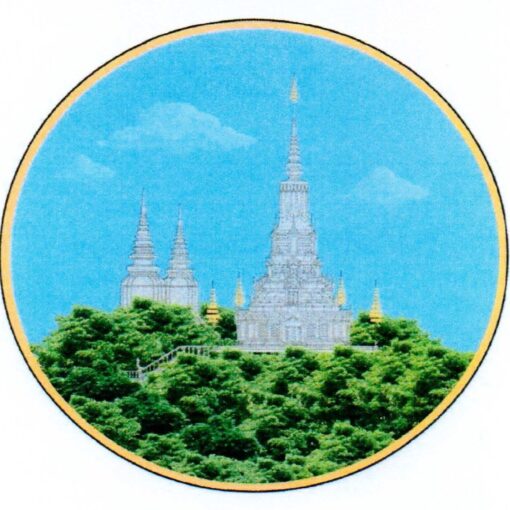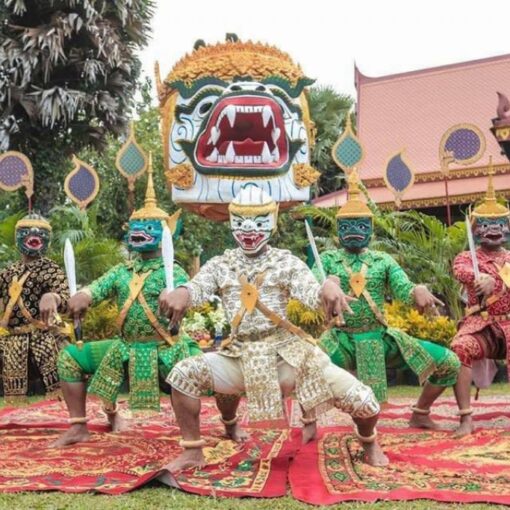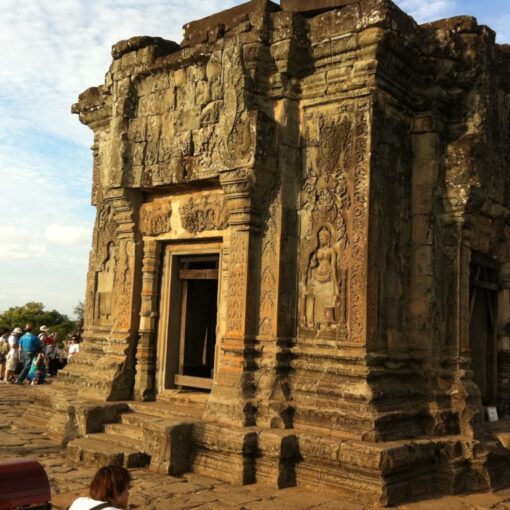
Kandal Province
Kandal is a province of Cambodia located in the southeastern part of the country, covering the area of 3,211.46 square kilometers. It completely surrounds the Phnom Penh Capital and borders the provinces of Kampong Chhnang […]

Kandal is a province of Cambodia located in the southeastern part of the country, covering the area of 3,211.46 square kilometers. It completely surrounds the Phnom Penh Capital and borders the provinces of Kampong Chhnang […]

Kampot is one of the southwest provinces of Cambodia which is 148 kilometers from Phnom Penh along National Road 3, 31, 33 and railway connection. Kampot, covering 4,873 square kilometers, is one of the coastal provinces of Cambodia.

Kampong Speu is a province of Cambodia which is 48 kilometers from Phnom Penh along National Road 4. Kampong Speu, covering 6,969.63 square kilometers.

Kampong Chhnang is one of the central provinces of Cambodia which is 91 kilometers from Phnom Penh along National Road 5. Kampong Chhnang, covering 5,521 square kilometers. Its neighboring provinces are (from north clockwise) Kampong Thom, Kampong Cham, Kandal, Kampong Speu and Pursat.

Kampong Cham is a province of Cambodia located on the central lowlands of the Mekong River which is 124 kilometers from Phnom Penh along National Road 6 and 7. Kampong Cham, covering 4,549 square kilometers. Its neighboring provinces are (from north clockwise) Kampong Thom and Kratie provinces to the north, Tboung khmum province to the east, Kandal and Prey Veng provinces the south, and Kampong Chhnang Province to the west.

Battambang is one of the northwest provinces of Cambodia which is 291 kilometers from Phnom Penh along National Road 5 and 6 and railway connection (approximately 274 kilometers). Battambang, covering 11,631.21 square kilometers. Its neighboring provinces are (from north clockwise) Banteay Meanchey and Siem Reap provinces to the north, Pursat Province and the Great Lake to the east, Pursat province the south, and Pailin Province and Border of Thailand to the west.

Banteay Meanchey is one of the northwest provinces of Cambodia which is 359 kilometers from Phnom Penh along National Road 5 and 6 and railway connection (approximately 337.31 kilometers). Banteay Meanchey, covering 6,678 square kilometers. Its neighboring provinces are (from north clockwise) Oddar Meanchey to the north, Siem Reap Province to the east, Battambang provice the south, and Border of Thailand to the west.

Pchum Ben, also known as Ancestor’s Day, is a half-month period (fifteen days: from one Roach to fifteen Roach) of remembrance for dead family members, which traditionally begins between September and October (the tenth month of the Khmer Calendar). Pchum Ben is believed to be a time when the souls of our ancestors that passed away may come back to us. The course of their journey will be decided by their karma and by the offerings made by their living relatives during Pchum Ben.

Kampong Thom is a central province of Cambodia that is 168 kilometers from Phnom Penh and 150 kilometers from Siem Reap along National Road 6. Kampong Thom, covering 13,814 square kilometers, borders (from north clockwise) Preah Vihear, Stung Treng, Kratie, Kampong Cham, Kampong Chhnang, Tonle Sap lake, and Siem Reap.

Siem Reap is one of the northwestern provinces of Cambodia which is 314 kilometers from Phnom Penh along National Road 6. Siem Reap, covering 10,299 square kilometers, is on the flat plain of Tonle Sap lake. Its neighboring provinces are (from north clockwise) Oddar Meanchey, Preah Vihear, Kampong Thom, Tonle Sap Lake (The Great lake), Battambang, and Banteay Meanchey.

Phnom Penh is Cambodia’s one and only capital and most populous city. It has been the national capital in two separate periods: the first period is a capital city from 1434 to 1497 and the second one is during the French Protectorate of Cambodia (1863-1953) from 1865 till the present, and has gradually grown to become the nation’s economic, industrial, and cultural center. Phnom Penh, covering 679 square kilometers, borders only Kandal Province.

“Visak Bochea Day” is a day to commemorate the Buddha’s birth, enlightenment, and death. It is a day to dedicate to his Dharma principles and adopt them into your everyday lives.

Khmer New Year, also known as “Choul Chnam Thmey,” meaning entering the new year, is a national holiday hosted by Cambodians annually. It is the season when Cambodians have free time from harvesting rice and other agricultural commodities. The event is Cambodia’s largest event and lasts three days, on the 13th, 14th, or 15th of April (in a specific year, it could be on the 14th to 16th of April).

The Royal Palace of Cambodia is a complex of buildings although it is generally understood to be the Royal abode of the King of Cambodia.


Independence Monument, or Vimean Ekareach as it is referred to in Khmer, is a majestic structure that dominates Phnom Penh city center.

The palm tree is a kind of plant that has been widely grown in Cambodia for a long time ago. The palm tree, commonly known as Borassus flabellifer in scientific name and in Khmer called “Tnaot”

Giant Barb is defined as the national fish of Cambodia. Giant barb is a freshwater fish. It was called in Khmer Trei Kol Raing or Trei Ka Hourn, or Trei Kbal Larn, and it is called in the scientific name “Catlocarpio Siamensis” and the English name “Giant Barb”.

Chek Pong Moin is called in the Khmer language, and the name of the scientific is Musa Aromatic and Chicken Egg Banana in English. The banana is a type of banana used by Cambodia people for a various purpose.

Royal Turtle is a reptile that represents Khmer culture and is also known as “Arn Derk SorSai” or “Arn Derk Loung” in Khmer, as well as the English name Royal Turtle and the scientific name “Batagur Baska”.

Giant Ibis (Tror Yorng) is a species of bird that is identified as a symbol for the Cambodian nation. The adults have overall dark grayish-brown plumage, with a naked greyish head, and upper neck.

The Koupreys “Grey ox” is a little-known, forest-dwelling, wild bovine species from Southeast Asia. Koupreys is a mammal species identified as a symbol for the Cambodian nation and a rare animal in the world.

Kramar is a sturdy traditional Cambodian garment and signifies the Khmer cultural identity with many daily-life uses and ornate by all segments and religions.


Bakong, also known as Indresvara, is one of the most beautiful temples in Siem Reap and is the first temple mountain of sandstone built by rulers of the Khmer Empire at Angkor near modern Sime Reap in Cambodia.

The gestures of this dance generally imitate the praying mantis, and costumes are the color of the insect.

According to the book Inventory of Intangible Cultural Heritage of Cambodia, Lakhaon Khaol is one of the oldest forms of Cambodian performing arts practiced as early as the Angkor period.

Koh Ker Temple in Preah Vihear province is constituted as “one of the marvels of Cambodian monumental heritage” by UNESCO.

When talking about Angkor’s highest temple, Phnom Bakheng stands first. It offers the finest and most beautiful scenery in the surrounding region.

The National Museum of Cambodia in Phnom Penh is the country’s leading historical and archeological museum and the country’s largest museum of history. It was officially inaugurated by King Sisowat in 1920.
